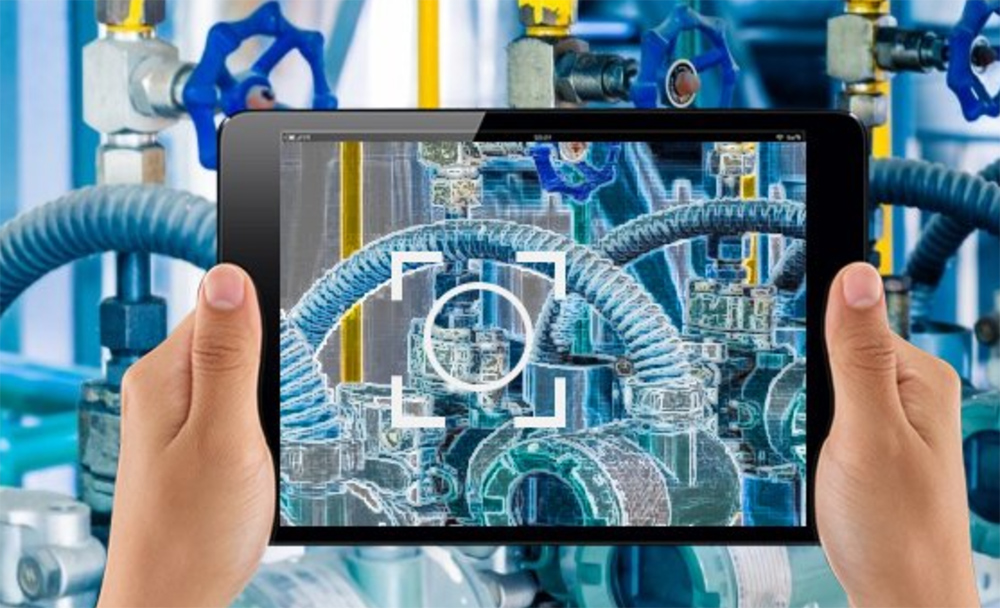The COVID-19 pandemic has forced manufacturers to leverage tech such as Virtual Reality for increased efficiency.

Cloud-based AR/VR solutions are scalable and help manufacturers build new projects.
Due to the COVID-19 pandemic, businesses and industries have had to reevaluate safe and efficient production and methods of service, ranging from utilizing online video conferences to shutting down operations entirely. Technologies such as remote working solutions and FaceTime have never been more important, but alternate, advanced technologies such as Augmented Reality (AR) and Virtual Reality (VR) are seeing expanded opportunities as well.
AR/VR present alternate realities to organizations and both have seen a rise in utilization in the past few months. AR/VR allows for an interactive experience between people and a real-world environment where objects from the actual setting are presented and enhanced by perceptual information from a computer.
Recent survey data published in TechRepublic lends credence to the increased utilization of AR/VR. Companies within technology, manufacturing, automotive, and aerospace and defense are prime examples of increased AR/VR use.
According to the survey data, approximately 56% of those polled said they have implemented some form of AR/VR into their organization over the last 12 months. Another 35% stated that they are considering implementation. Those employing AR/VR are seeing great results.
Looking toward the future, companies only expect to enact more of this technology. The Coronavirus pandemic may impact the technology and increase usage numbers further. Many companies are looking to implement a more virtual design in the workspace, therefore limiting physical proximity and social interaction between workers. The recent COVID-19 pandemic may push this number further, especially as companies of all sizes look to implement more virtual design into their workflows to minimize human interaction on the production floor. While many companies scramble for ways to mimic the workplace when all employees are working from home, the trial possibility of alternate reality products is important. Though the technology is new, it gleams with a positive appearance in the labor force.
For employees and employers ensuring productivity from remote locations, productivity can be challenging. Employers have started to turn to AR/VR to aid in the task. Twenty-nine percent of the companies polled said they are realizing more than a 25% increase in production efficiency. Additionally, more than half (61%) said they see as much as a 20% savings in costs as a result of gripping alternate reality technologies. Sixty percent use it for virtual supplemental labor on production lines. This percentage is quickly followed by virtual customer service visits and virtual design and engineering, both standing at a 53% handling rate. Remarkably, the technology is even used to train individuals, with 26% noting the technology’s help in instructing employees.
Scaling projects represents a primary challenge to companies that use these technologies in aiding their design and production. Of the companies that have already implemented these solutions, 76% need the most help when scaling further as they pursue more projects. Additionally, of those that have not yet implemented, 71% said uncertainty about scalability is the main reason why they have not yet launched an AR/VR solution.
Why is scalability such a challenge? Enterprise-grade high-quality AR/VR platforms require both performance and scale. However, existing systems such as MS HoloLens and others are severely limited in both aspects. As these virtual environments become richer and larger, the problem continues to compound. This cycle is repeated for each of the different AR/VR hardware platforms, making it difficult for any enterprise to move from experiments and pilots to full-scale deployable solutions, thus stunting the speed of innovation and effectiveness.
In response, many companies are working with outside specialized experts that can implement effective AR/VR solutions for additional project workloads. These specialty providers offer the experience and technical background to implement solutions through platforms that allow for proper scaling.
Overall, in a constantly evolving society, new technology is crucial. In particular, the Coronavirus presents the necessity for an almost complete shift in company methodology when reaching clients, and in functioning as productive sites for work. According to conducted research on the topic, a majority of companies see augmented reality and virtual reality as key components for efficient production and communication at this time.

Dijam Panigrahi
About The Author:
Dijam Panigrahi is Co-founder and COO of Grid Raster Inc., a leading provider of cloud-based AR/VR platforms that power compelling high quality AR/VR experiences on mobile devices for enterprises. For more information please visit www.gridraster.com.
In this episode, I sat down with Beejan Giga, Director | Partner and Caleb Emerson, Senior Results Manager at Carpedia International. We discussed the insights behind their recent Industry Today article, “Thinking Three Moves Ahead” and together we explored how manufacturers can plan more strategically, align with their suppliers, and build the operational discipline needed to support intentional, sustainable growth. It was a conversation packed with practical perspectives on navigating a fast-changing industry landscape.